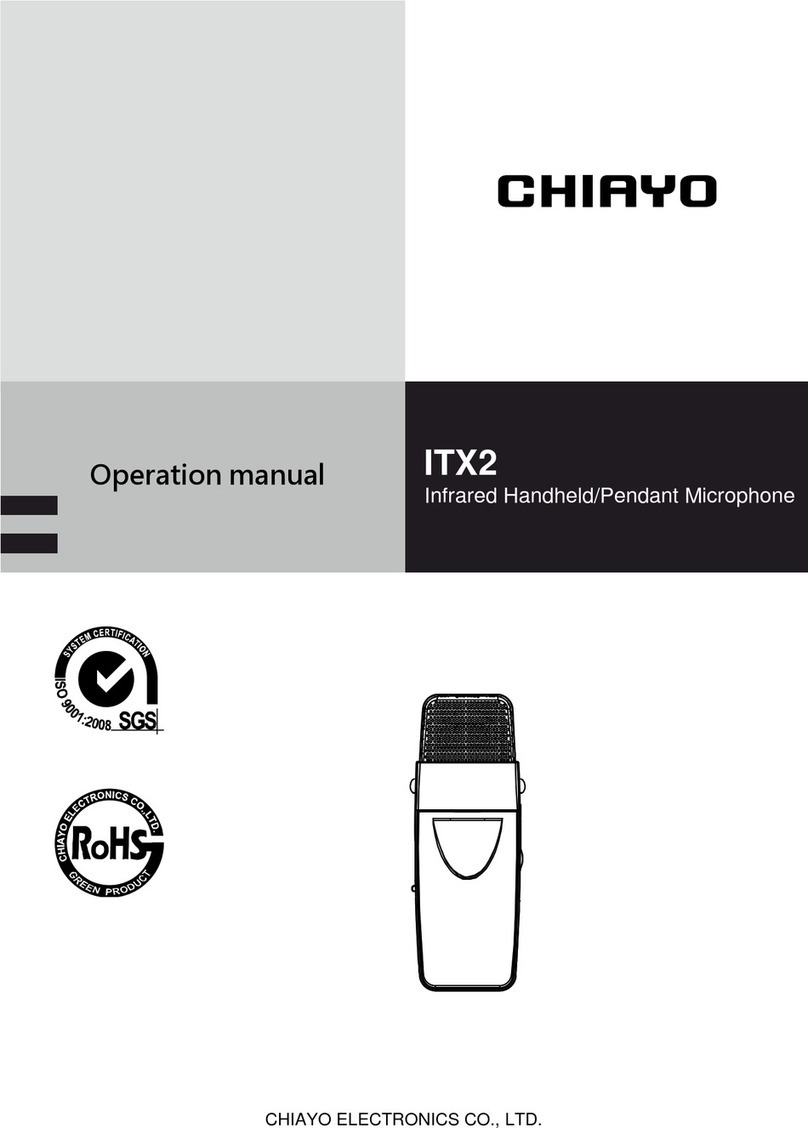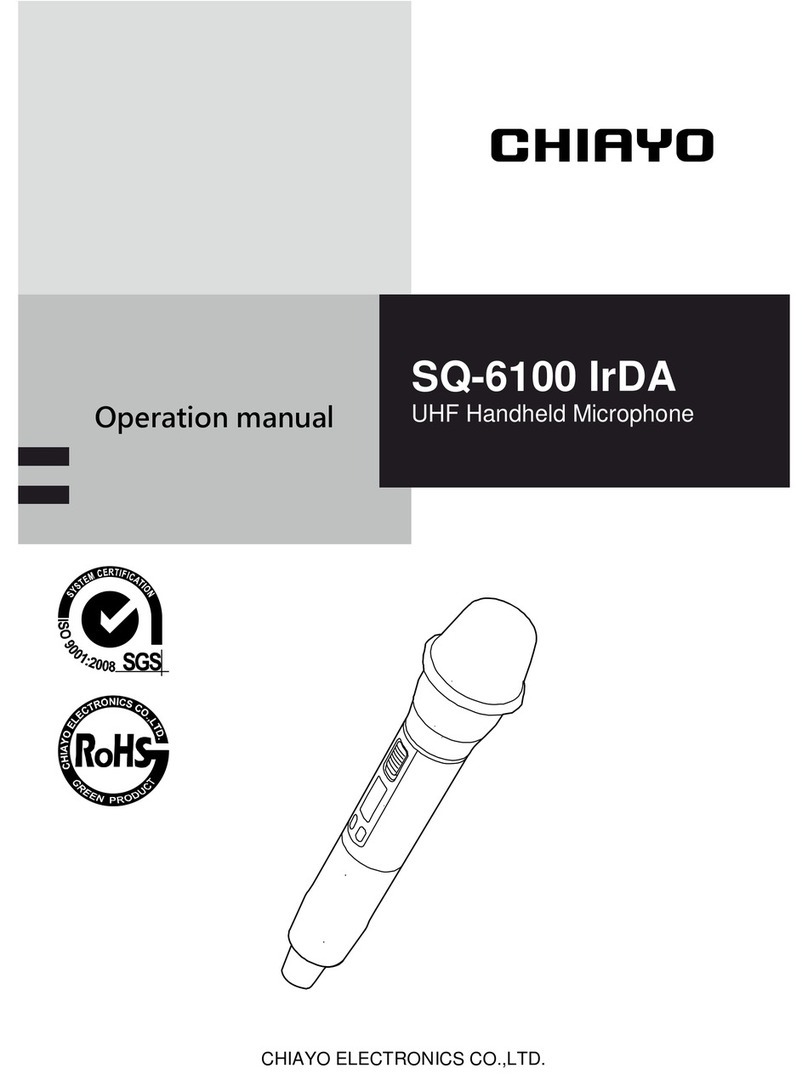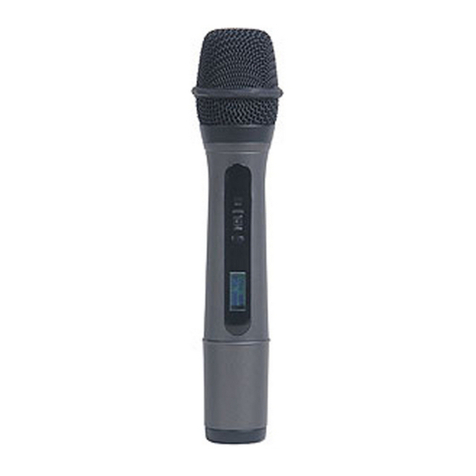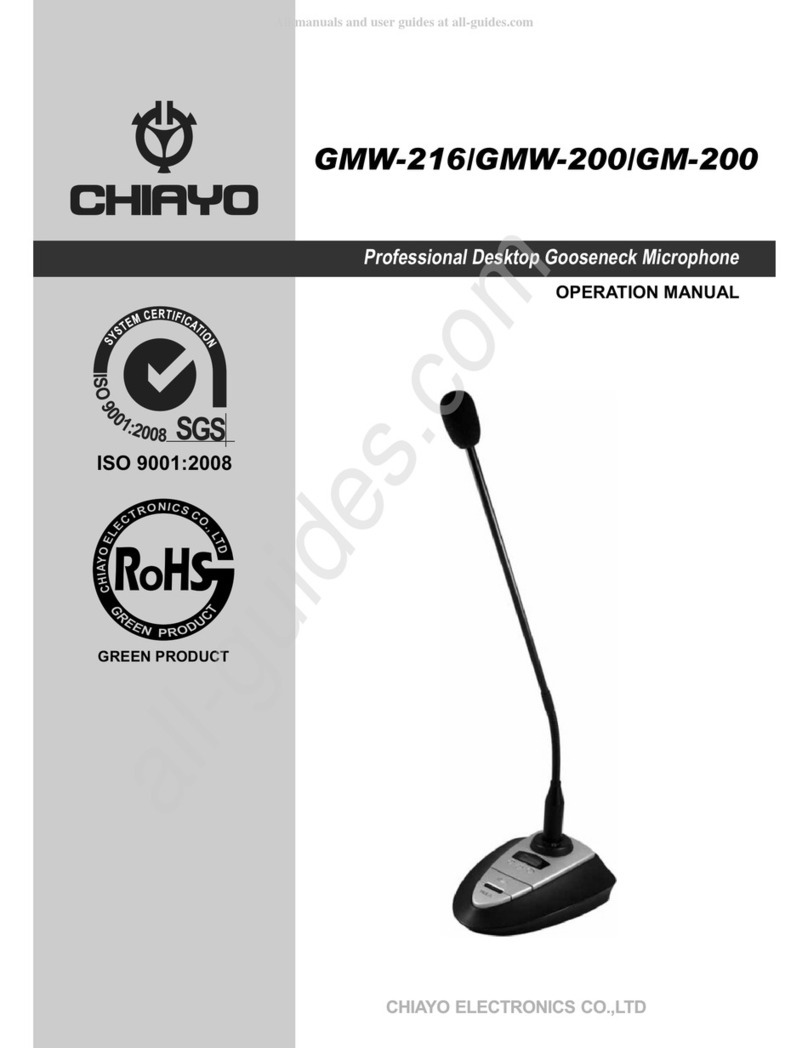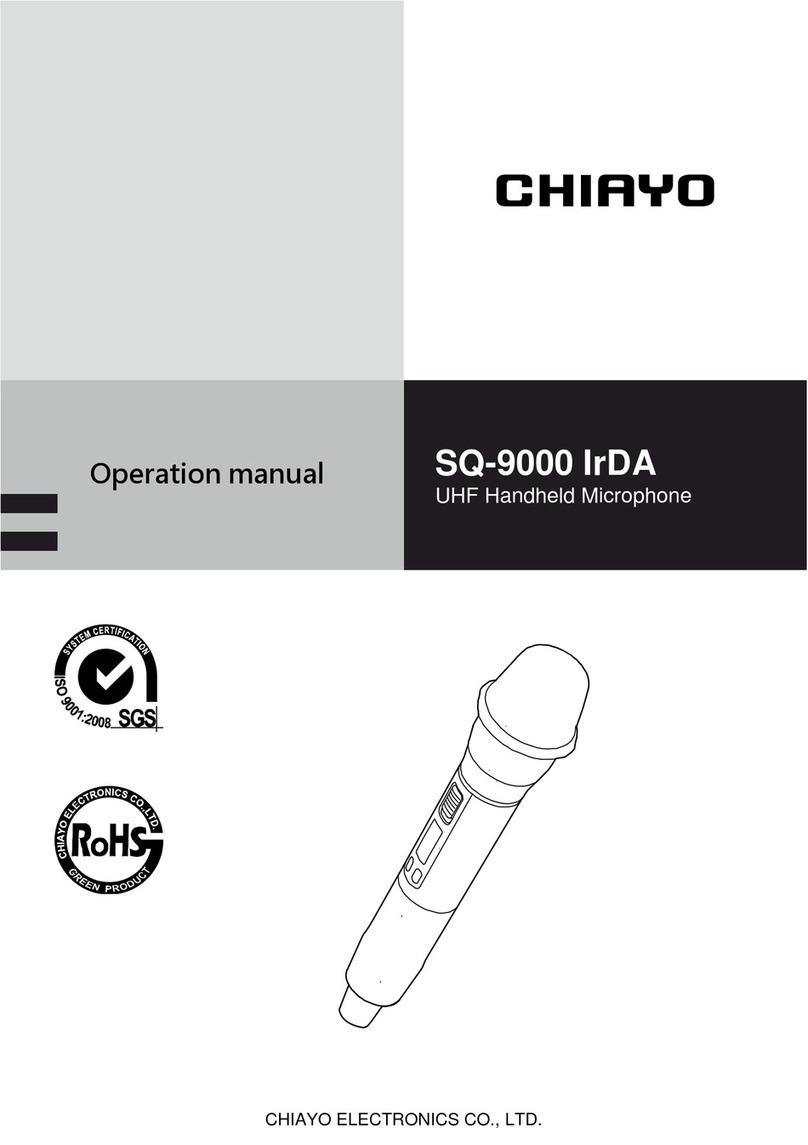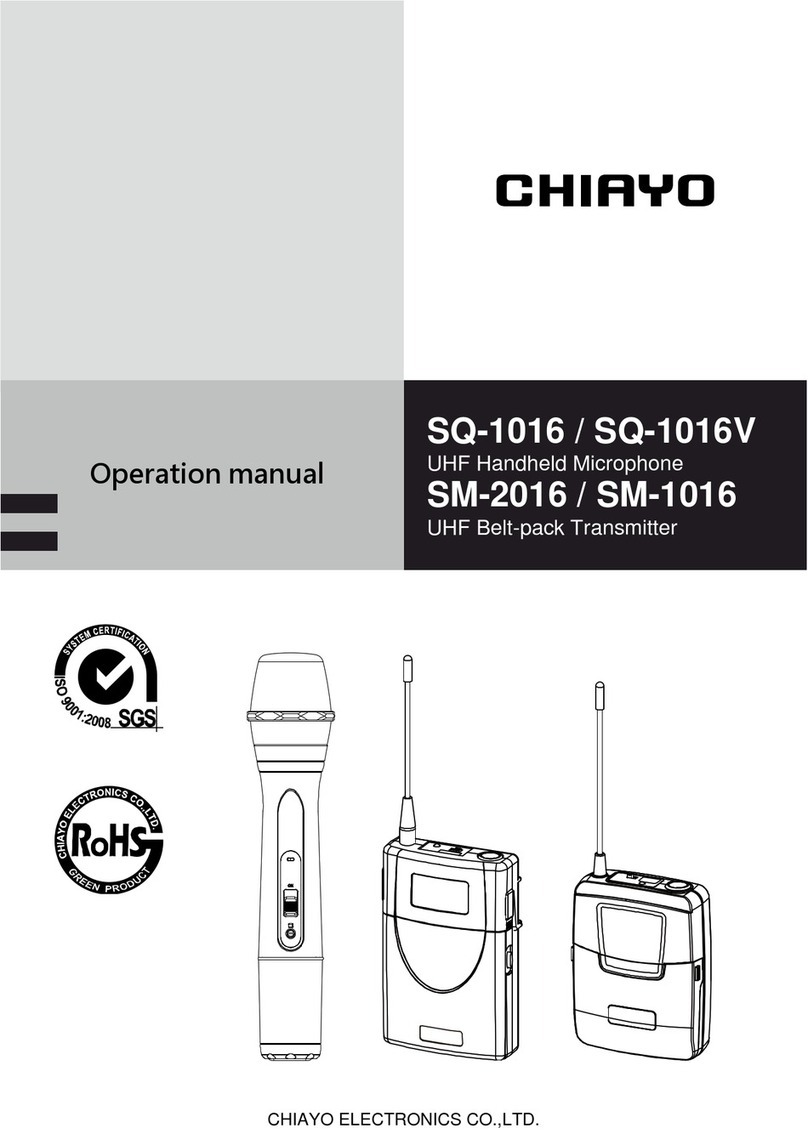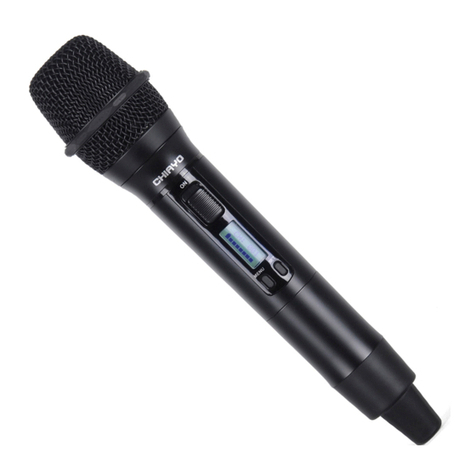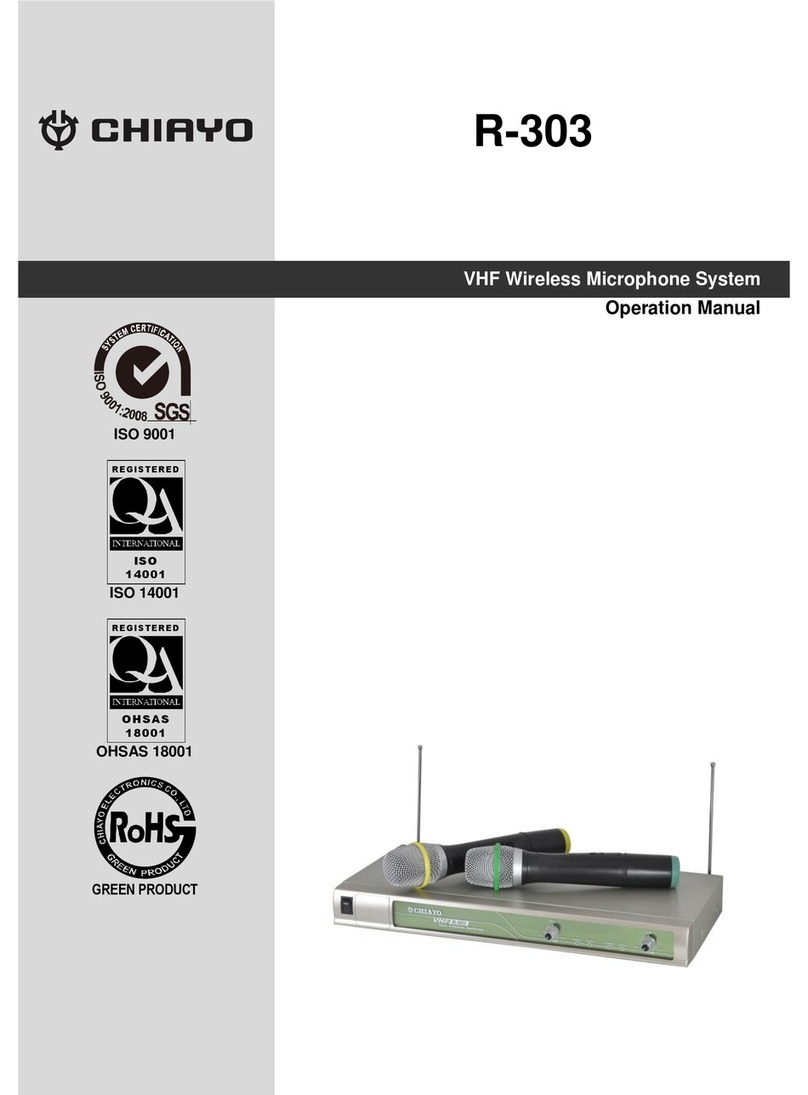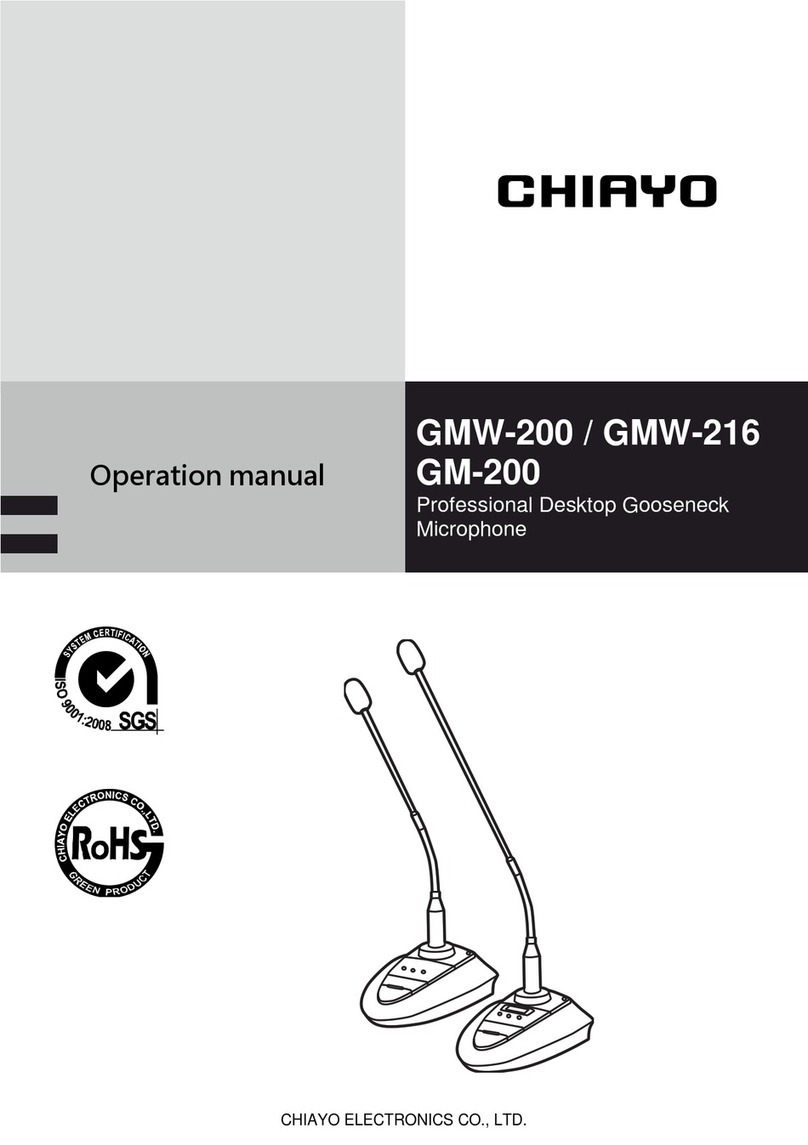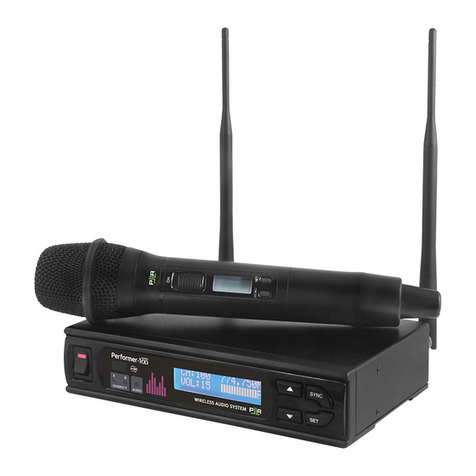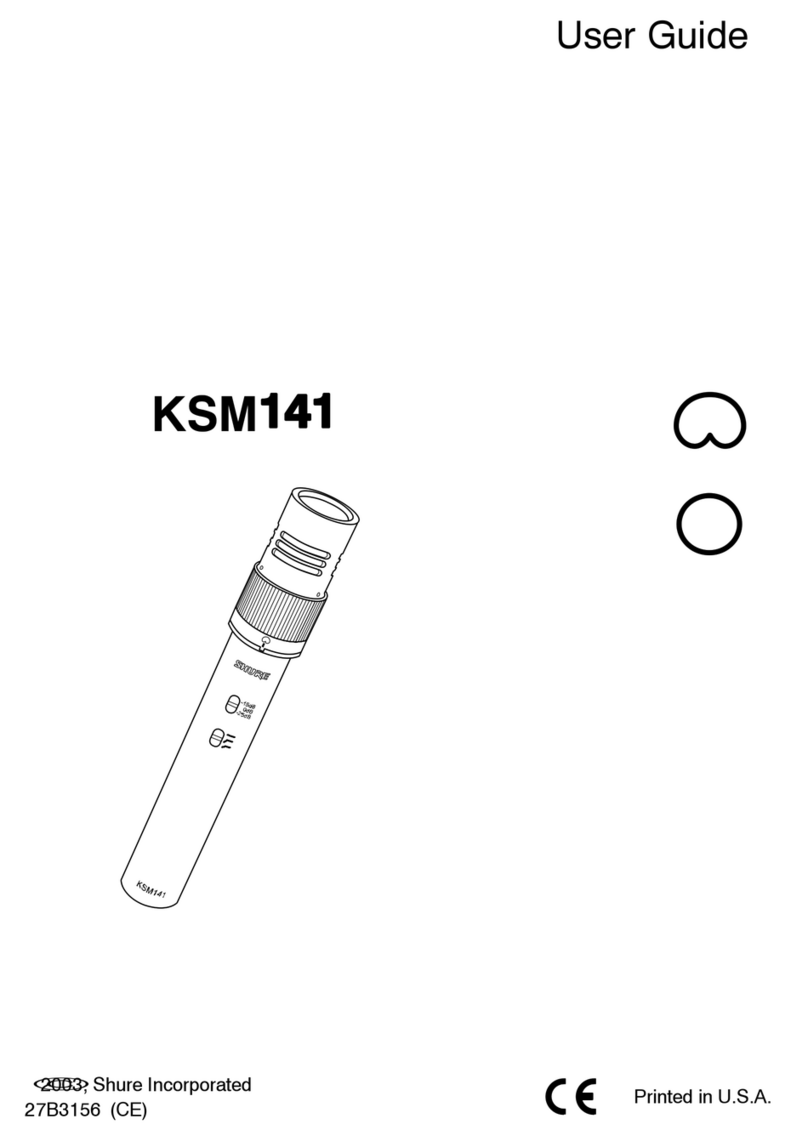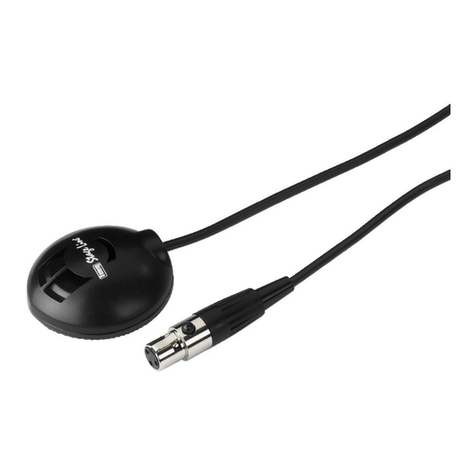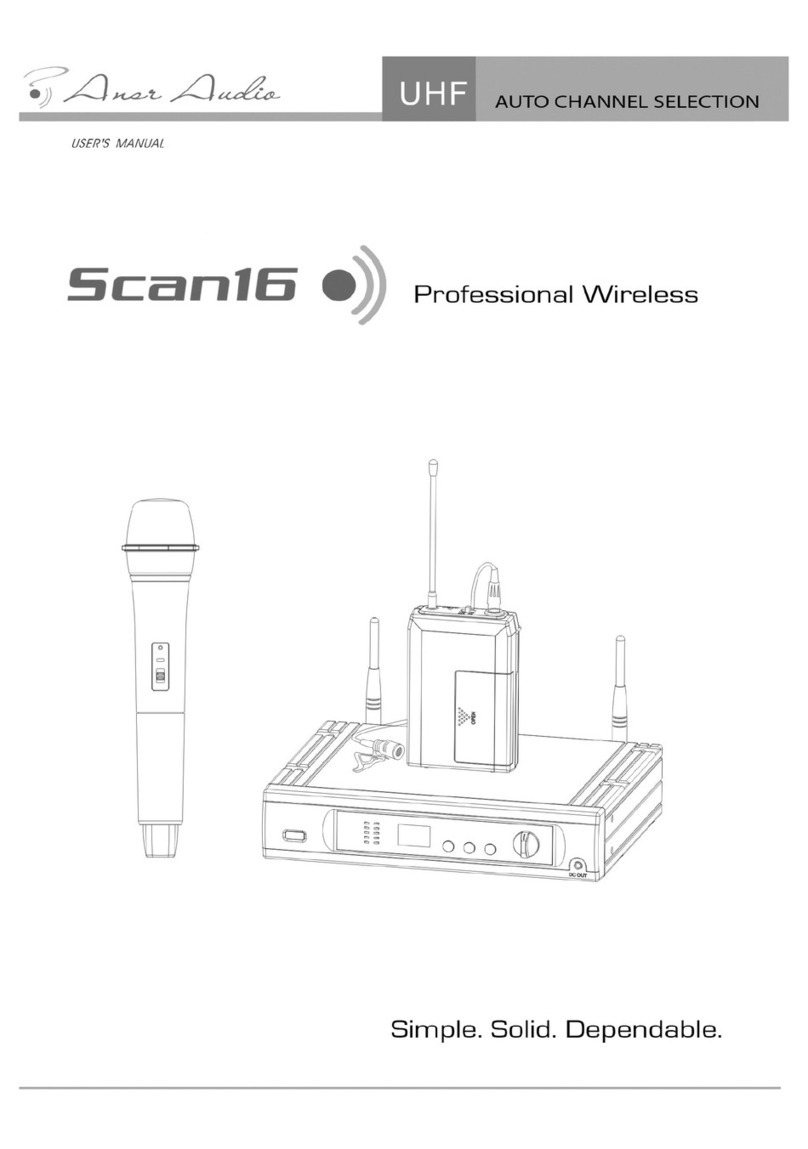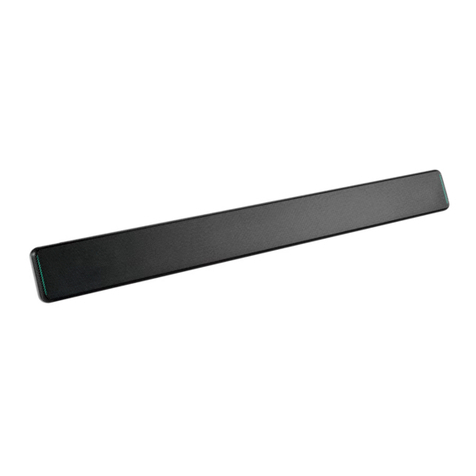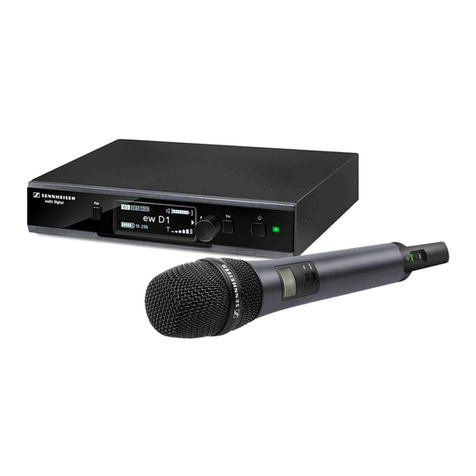2
Making changes to various settings on SDR-1932 receiver
1. Changing CHANNEL / FREQUENCY
This can only be done by pressing UP or DOWN buttons.After a desired channel is
selected, it will be automatically saved and stored into the memory.
2. Adjusting VOLUME level
Volume level can be adjusted by rotating the designated volume knob. Clockwise to
increase the volume and counterclockwise to decrease the volume.
3. Adjusting SQUELCH level
The squelch control is on the back of the receiver. When strong interference happens
to the operation, you can use a small screw driver to increase the squelch level by
turning the switcher clockwise. If the interference is too strong even the level is
already set to maximum, the currently in-use channel is not applicable in this location
and a change to channel is recommended.
Receiver installation
For best operation, the receiver should be at least 1m
above the ground and 1m away from a wall or metal
surface to minimize reflections. The transmitter
should also
be at least 1m away from a wall or metal surface to
minimize reflections. The transmitter should also be at
least 1m away from the receiver.
Keep antennas away from noise source such as
motors, automobiles, neon light as well as large metal
objects.
There are 2 audio output jacks, AF1 and AF2, in the receiver rear panel. AF1 is for
channel 1 while AF2 for channel 2. The audio output of channel 2 can be mixed with
channel 1 by switching MIX SWITCH to ON, otherwise its output is independent.
Besides, there is a MIC/LINE selector for both AF1 and AF2. If handheld/headset/
lavalier microphone is used, please switch to MIC. If instrument cable is connected to
beltpack transmitter, please switch to LINE.
5
Operation
Chiayo Transmitters and Receivers have factory preset to allow immediate usage after
switch-on.
However, please note that the transmitter Sensitivity function is dependent on
application such as close proximity singing or tripod mouth speech. To avoid
overmodulation and distortion, please check whether the preset sensitivity level is
suitable for your particular application. For close proximity singing purposes, please
select lowest sensitivity level whereas for tripod mount speech purposes, please
select a higher sensitivity level.
If you have made changes to the setting, after making proper selection on Transmitter
and Receiver settings the system is ready for operation. However, both antennas of the
receiver must be installed to assure a good reception.
First switch on the receiver by pressing the Power On / Off switch. The LED display will
show the channel last stored. Then switch on the matching transmitter with the correct
matching frequency.
The LED RF indicator on the receiver front panel will light up to indicate RF signal
been received. If not in this case, please check and verify the frequency setting on
both transmitter and receiver. When transmitter is moving around, the Diversity A B
switch will light on alternately to indicate the stronger reception from either A or B
antenna.
When voice is spoken into the microphone, the LED AF indicator on the receiver front
panel will light on and flash according to the intensity of the AF signal.
There are two different audio outputs at the rear side of the receiver: Balanced (
microphone level) and Unbalanced (LINE leve ). Please select the matching output to
match the input of the connecting Mixer or Amplifier.
Tips to obtain the best results for a wireless microphone system
1. For transmitter, please use only fresh alkaline batteries. Do not use general purpose
(carbon zinc) battery.
2. Transmitter and receiver should be as close as possible, but not less than 1m.
3. Position the receiver well so as to minimize possible obstruction between it and the
transmitter. Line of sight is best.
4. If external antenna is used, low loss RF shielded cable should be used and the length
of the cable should not exceed 3m.
5.The receiver antenna should be kept as far away as possible from any metal surface.
6. A receiver can not receive signals from two transmitters at the same time.
Mixer / Amplifier
individual audio output
Mixer / Amplifier
mixed audio output (MIX SWITCH to ON)
AF2 audio output (MIX SWITCH to OFF)

